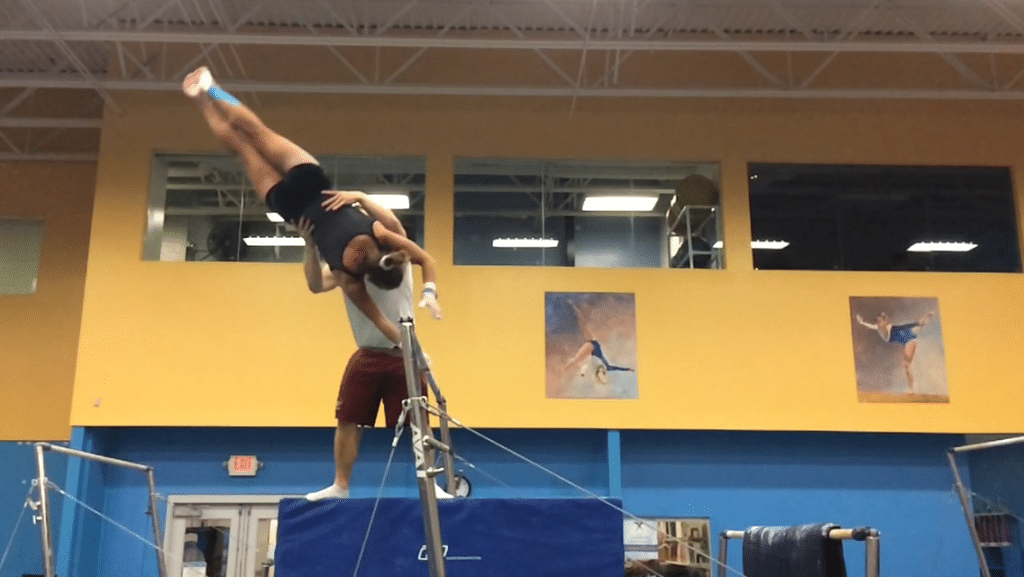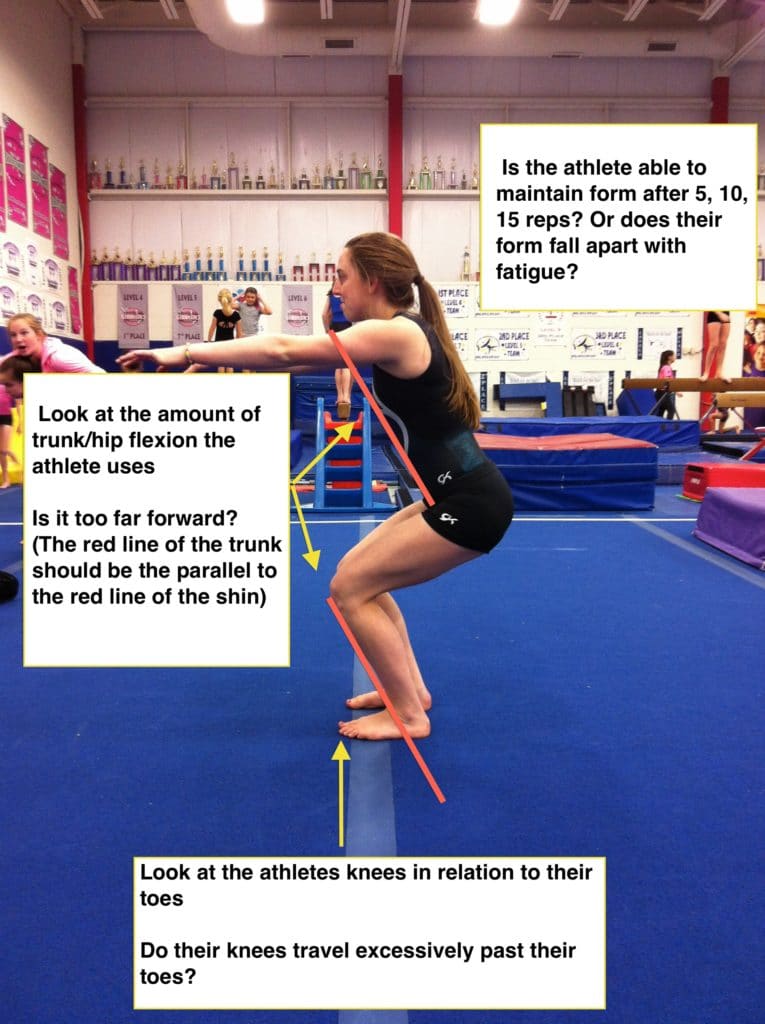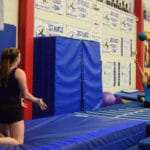Does Having Good Form Make A Gymnast’s Squat Worse?
It’s known to the gymnastics world that having good form in all skills is pretty much essential to success. You can throw all the craziest skills in the world, but if they are very sloppy the aesthetics look pretty bad, and judges likely break their pens trying to rack up the deductions. Breaking down what “good form” requires, however, brought me to a very interesting realization about many gymnasts I treat who can’t squat well and as a result have lots of overuse injuries in their knees/ankles. Here is what I mean
Table of Contents
“Good Form” and “Good Squat” May Be Opposite Movements
When you think about the nature of what proper gymnastics form entails, we want to see
- Feet/legs together – requires lots of inner thigh muscle (adductors) contraction
- Toes pointed – requires lots of calf muscle (gastrocnemius and soleus) contraction
- Knees straight – requires quad muscles (rectus femoris, vastus medialis, vastus lateralis, vastus intermedialis) contraction

Now, if you look at a squat pattern, you may notice it requires the direct opposite of this motion
- Feet/legs hip width apart – about hip width to allow hip dominated squat pattern
- Toes up into dorsiflexion – requires calf muscle and ankle joint mobility
- Knees Bent – requires a moderate degree of quad flexibility, especially as depth increases

A theory that I have really been considering is that over years of training gymnasts may naturally lose their ability to squat as soft tissue becomes excessively stiff from proper form training. Out of all three possible limitations I think lots of jumping/running creates calf stiffness can contribute to losses of ankle mobility. I have seen groin stiffness cause some issues as well, quad flexibility tends to not be the biggest factor.
Other common culprits that can also create a loss of mobility are imbalances in strength programs, where lots of anterior chain quad dominant exercises (squats, box jumps, broad jumps, etc) are not balanced out with posterior chain glute/hamstring dominant exercises (hip lifts, deadlifts, hamstring falls, etc). We have to make sure we plan strength out and create a well-balanced athlete.
How To Help?
Every sport has it’s unique demands that create certain adaptations or changes in movement patterns. Baseball pitchers may gain lots of external rotation shoulder mobility or have certain areas of muscular stiffness from throwing, soccer players may get much more groin stiffness from sprinting/kicking, and so on. Gymnasts may have this happening for their groins, quads, and calves given the demands of skills and the need for proper form.
We want strength and power through these muscles, but we can’t let this muscular stiffness get so far gone that it starts to impact other movements like squatting, jumping, and landing. For gymnasts who are constantly using this tight body shape for good form, I feel they should be doing regular maintenance care to stay ahead of any issues. For the girls I coach, I have them do a few things.
1. Daily Soft Tissue Work to Calves, Quads, Inner Thighs
2. Weekly Hip and Glute Strength Work
3. Daily Jumping and Landing Technique Drills
Concluding Thoughts
Now obviously there are a ton of other reasons someone’s squat could be off or their landing technique could be nonoptimal, outside of just mobility restrictions in these areas. They could have missing core control, they may be fatigued, they may not be ready for the skill they are working, or they could lack leg strength to properly absorb the force. Personally, I believe in the younger years it’s more about lack of proper squat training, overuse, and strength. As gymnasts grow older, I think it becomes more about soft tissue limitations and higher impact force/skill number.
I just wanted to share this though as it is something that I see commonly in the clinic treating gymnastics clients. Seeing it come up so frequently is why I stress to the gymnasts I coach they must be doing daily soft tissue work to combat this overuse. Just some thoughts I have have had, but hope people find it helpful! Take care,
Dave Tilley DPT, SCS


